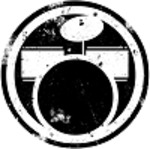Deciphering chords by ear (Pro Keys/Harmonies)
Tagged: harmonies, music theory, Pro Keys
- This topic is empty.
-
AuthorPosts
-
February 7, 2017 at 6:20 pm #394819
 SamyazaMember
SamyazaMemberAny Pro Keys/Harmonies experts out there know of any good music theory tutorials? I’m not very good at deciphering chords by ear, and I’d like to get better at it so I can author Pro Keys for songs that don’t have sheet music or MIDIs available.
February 7, 2017 at 8:15 pm #481121 DoNotPassGoMember
DoNotPassGoMemberMusic there really is a big thing. It’s also variable from person to person I feel, and some people find different aspects of it easier. More so answering the second half of your question though on chords… how aggressive of a song are we talking about here.
Assuming there isn’t a midi or sheet music to directly point to (which, it’s always good to note are usually never 100% accurate themselves), there are some ways to try and fudge around it and get pointed in the right direction.
1) What’s the overall key signature of the song?
This can usually be a good starting point. A lot of songs keep a constant key, so you at least know where in the scales you are looking for. Main key is D, well you know the tones should be mostly D E F# G A B C#. From here, when you find a chord you are unsure of, you can use a toner (or honestly, the Vocals track has it built in) and place a note there and see how audible they match up.
Lets say in this same example you can hear an F# note. This is where you’ll want to work with a standard 1 3 5 and hope it puts you in the general ball park. With this F#, you’ll want to test chords here using the F# in the 1, 3, and the 5 position. For this example that would be trying F# A C#, D F# A, and then B D F#. Assuming you were on the right path, one of those should sound audibly closer than the others, and it’s likely something along those lines. From there, it’s up to you to determine how to structure the chord that makes the most sense to what you are hearing, and what sounds the most accurate. Maybe you have it invert it? ie (D F# A = F# A D = A D F#) Maybe it’s just the first and the fifth? (F# C# or B F#)
2) Learn the chord progression in a song
This is much more difficult, but you can usually find this information online for more known and popular songs. I’m sure you’ve heard about the Four Chord Song idea? If not, google that. It basically sums up to “Many popular music hits devolve down to same chord progression of I V iv IV (1, 5, minor 6, 4). Using D as an example again as above, a 4 Chord song in D Major would have it’s chords usually progress going from 1 (D F# A), to 5 (A C# E), 6 (B D F#), to 4 (G B D). It’ll likely be change per measure, but that can be different.
Knowing this, you could at least help narrow yourself to a smaller range to pick up from the 1st point I talked about and work at that.
3) Find a “Guitar Chords” tab
This is along the lines of the 2nd point above. A lot of guitar tab websites have “Chord tabs” which are basically meant for people playing guitar more freeform who can just strum the chord progressions. On here, you’ll see them list out when chords generally shift compared to the lyrics. This can help determine more easily what chord area you should* be in. Sadly, these aren’t always 100% accurate either, but they can be a big help.
Keys are a lot more lax now days, which is both a good a bad thing. You should always strive to outside the best chart you can for something….. but without completely accurate sheet music and/or stems, it’s just not always possible. Keys aren’t always the focus of a music piece, and can get buried in the mix. Focus more on making sure if there ARE keyboard notes that you aren’t missing any notes, make sure the chord progress up, down, ect accurately from what a player would hear, and make sure the chords themselves are musically correct and not just what might randomly make sense. Keep in that key for most situations and watch the key progressions.
-
AuthorPosts
- You must be logged in to reply to this topic.